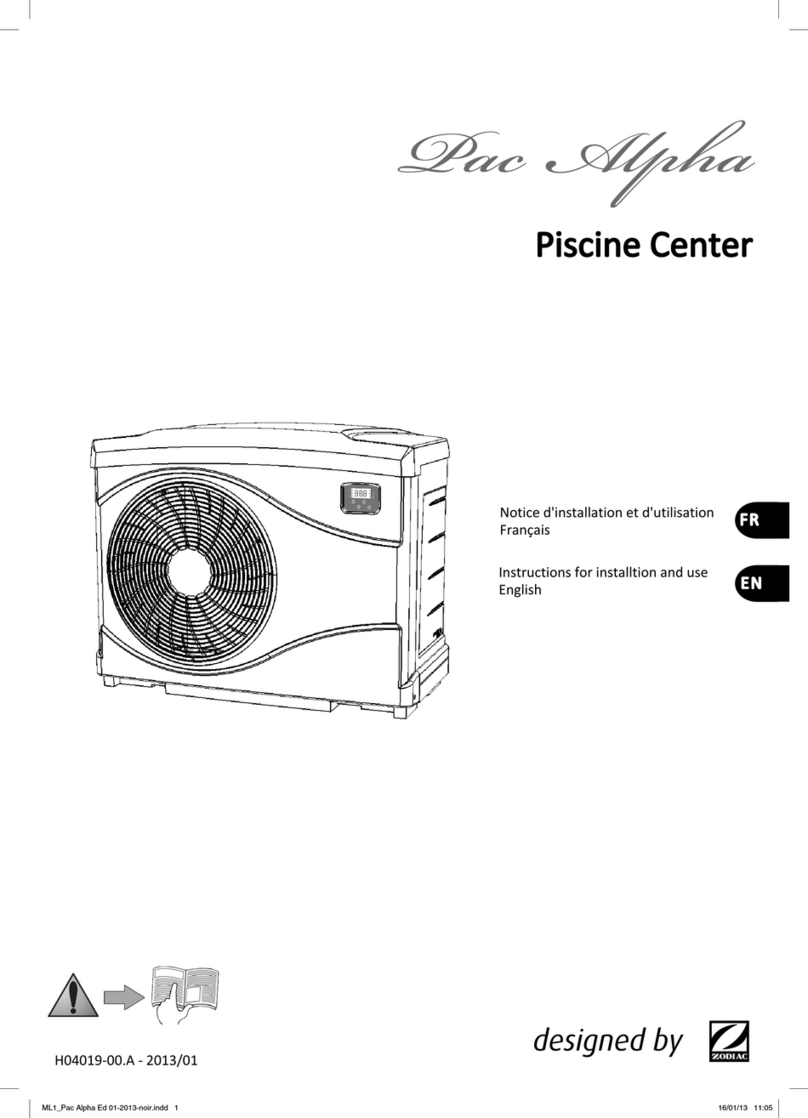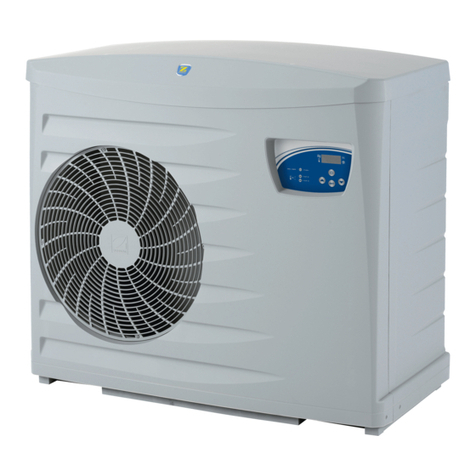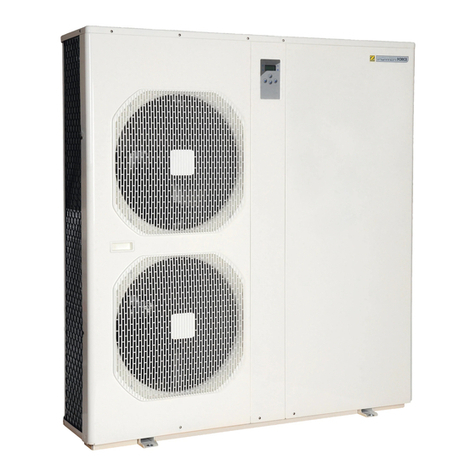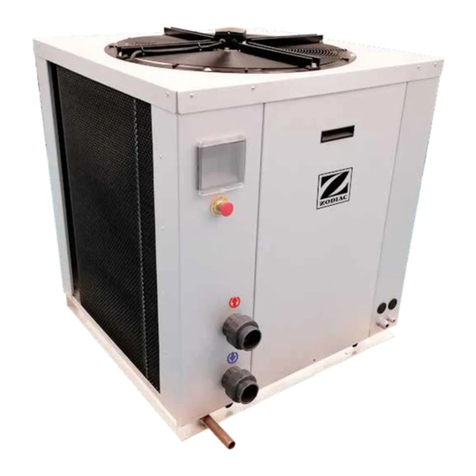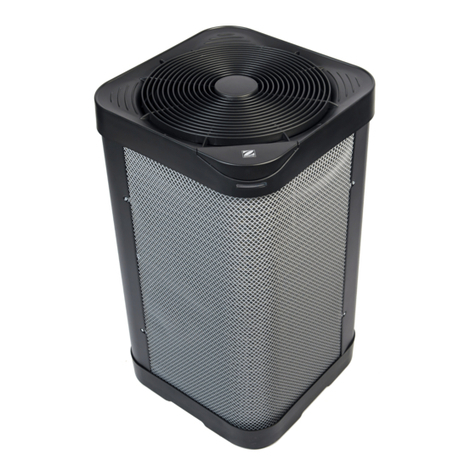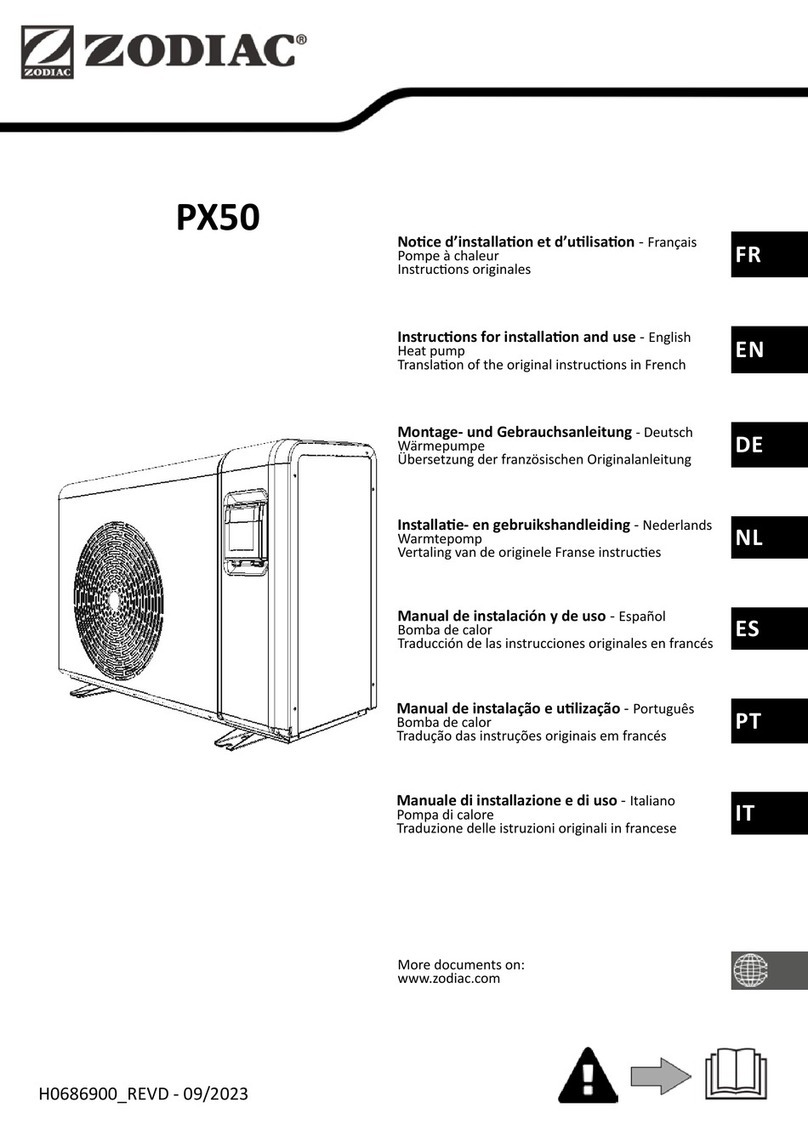
3
INSTALLATION AND MAINTENANCE
• The appliance may not be installed close to combusble materials, or an air duct
inlet of an adjacent building.
• With some appliances, it is essenal to t protecon grids if the unit is installed in
an area with uncontrolled access.
• During installaon, troubleshoong and maintenance, pipes may not be used as
steps: the pipe could break under the weight, spilling coolant and possibly causing
serious burns.
• When servicing the appliance, the composion and state of the heat transfer uid
must be checked, as well as the absence of any traces of coolant.
• During the appliance’s annual sealing test in accordance with applicable legislaon,
the high and low pressure switches must be checked to ensure that they are
securely fastened to the cooling circuit and that they cut o the electrical circuit
when tripped.
• During maintenance work, ensure there are no traces of corrosion or oil around
the cooling components.
• Before beginning work on the cooling circuit, stop the appliance and wait for a few
minutes before ng the temperature and pressure sensors. Some elements such
as the compressor and piping may reach temperatures in excess of 100°C and high
pressures with the consequent risk of severe burns.
LABELLING
• Equipment shall be labelled stang that it has been decommissioned and emped
of refrigerant.
• The label shall be dated and signed.
• For appliances containing ammable refrigerants, ensure that there are labels on
the equipment stang the equipment contains ammable refrigerant.
RECOVERING
• When removing refrigerant from a system. either for servicing or decommissioning,
it is recommended good pracce that all refrigerants are removed safely.
• When transferring refrigerant into cylinders, ensure that only appropriate
refrigerant recovery cylinders are employed. Ensure that the correct number of
cylinders for holding the total system charge is available. All cylinders to be used
are designated for the recovered refrigerant and labelled for that refrigerant (i.e.
special cylinders for the recovery of refrigerant). Cylinders shall be complete with
pressure-relief valve and associated shut-o valves in good working order. Empty
recovery cylinders are evacuated and. if possible. cooled before recovery occurs.
• The recovery equipment shall be in good working order with a set of instrucons
concerning the equipment that is at hand and shall be suitable for the recovery
of all appropriate refrigerants including, when applicable, ammable refrigerants.
In addion, a set of calibrated weighing scales shall be available and in good
working order. Hoses shall be complete with leak-free disconnect couplings and in
good condion. Before using the recovery machine, check that it is in sasfactory
working order, has been properly maintained and that any associated electrical
components are sealed to prevent ignion in the event of a refrigerant release.
Consult manufacturer it in doubt.
• The recovered refrigerant shall be returned to the refrigerant supplier in the
correct recovery cylinder, and the relevant waste transfer note arranged. Do not
mix refrigerants in recovery units and especially not in cylinders.
• If compressors or compressor oils are to be removed. ensure that they have been
evacuated to an acceptable level to make certain that ammable refrigerant does
not remain within the lubricant. The evacuaon process shall be carried out prior to
returning the compressor to the suppliers. Only electric heang to the compressor
body shall be employed to accelerate this process. When all is drained from a
system, it shall be carried out safely.
RECYCLING
This symbol is required by the European direcve DEEE 2012/19/EU (direcve on waste electrical and
electronic equipment) and means that your appliance must not be thrown into a normal bin. It will be
selecvely collected for the purpose of reuse, recycling or transformaon. Any substances it may contain
which are potenally dangerous to the environment shall be eliminated or neutralised. Request informaon
on recycling procedures from your retailer.
EN




